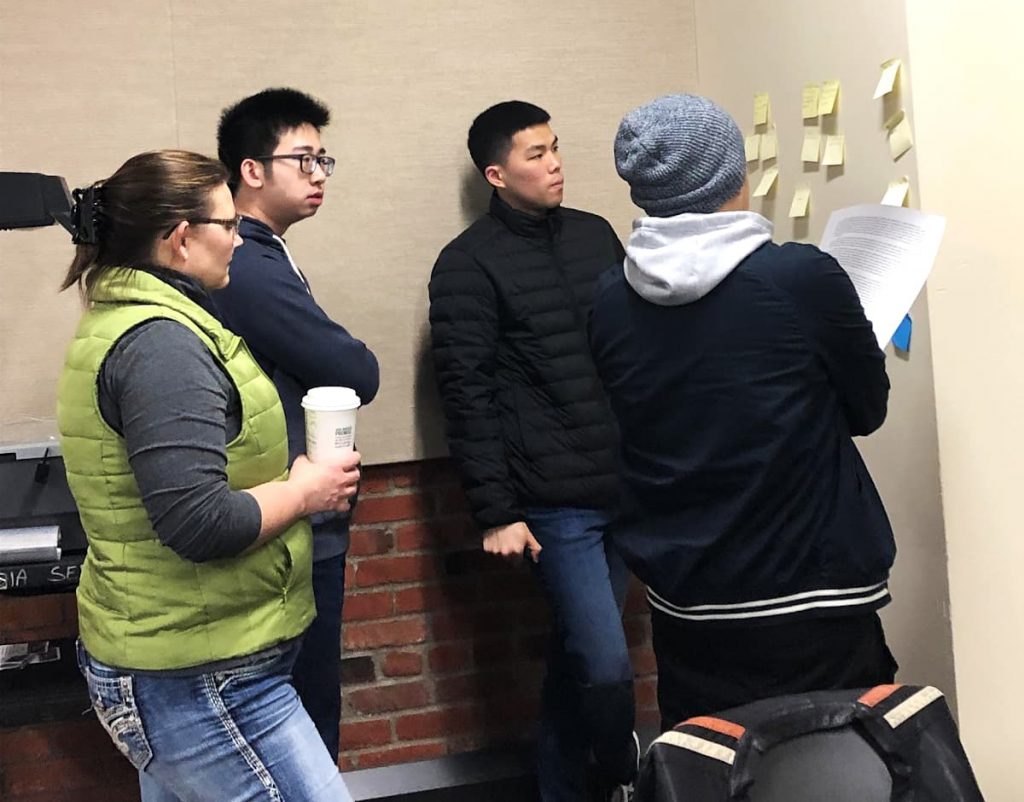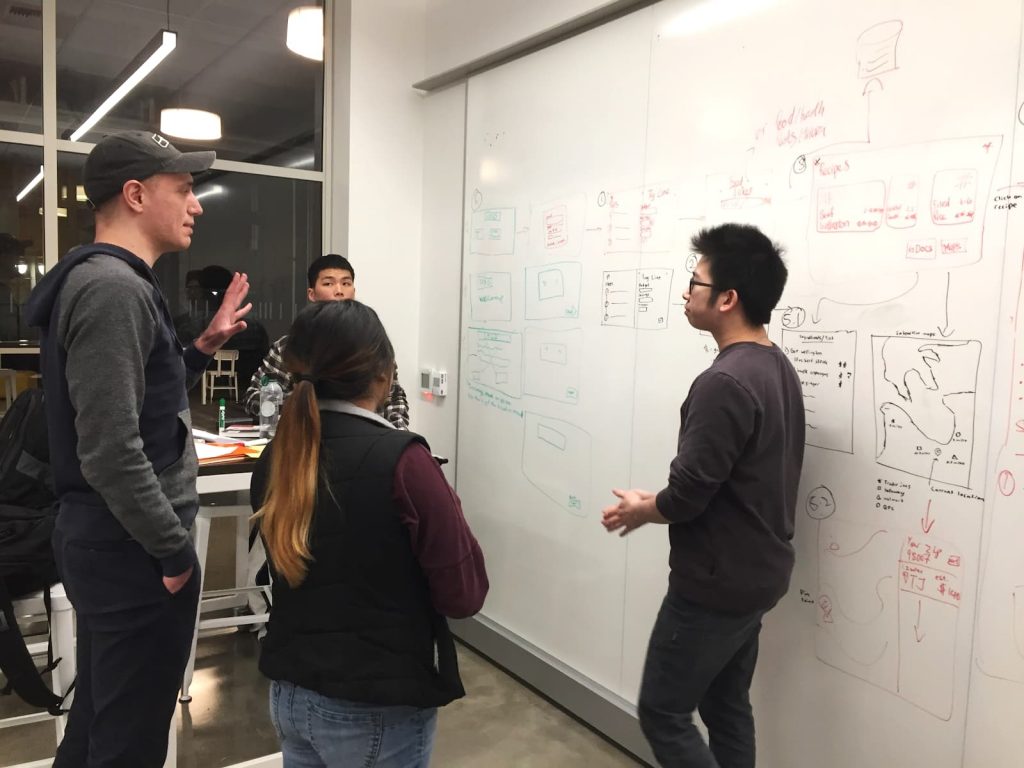Main Content
"If they come up with one design and stick with it, I’ll consider that a failure. No one comes up with the best idea on their first go. They have to adapt. The more attached designers are to their ideas, the less responsive they are to users’ needs."

Equipped with this scattered data, students turned to analysis. One idea per sticky note, they wrote down their insights. Teams convened and combined their observations, arranging notes in theme clusters. Some findings took them by surprise.
The team helping a local theater discovered that potential patrons wanted alcoholic beverages to be served. Another team working on students’ cooking and budgeting habits was surprised to discover that 68% of the students they surveyed cook every day.
Dr. Rose highlighted these realizations as an essential step to becoming a designer: moving away from “I” thinking – how I as the designer think about using a product – to “You” thinking – how users actually engage with a product.
SHIFTING CLIENT NEEDS
Several weeks later, the teams had defined their problem and brainstormed solutions. They’d also segmented their users, created personas, and developed a journey map for how a user might interact with their product. They’d bounced these ideas off their stakeholders and community partners.
Sometimes this feedback changed the entire direction of the project. One team’s client was enthusiastic, but seemed to embrace too many ideas, leaving the scope of the project ill-defined. Another learned that their real-life project was already underway, changing the need for the deliverable they had initially envisioned. The team working on food access learned they needed to design for non-users too.
Although these changes added stress to an already tight project timeline, Dr. Rose noted these challenges are exactly what happens when designing for clients. Amid curveballs and uncertainty, students were experiencing the reality of design thinking for themselves. Unexpected changes and adaptation are at the heart of this method.
CONTEXTUALIZING DESIGN
Ideation morphed into prototyping. The students needed to physically make something – even if it was a low fidelity sketch – to see if their ideas had legs.
For some teams, enthusiasm at this point was high. They thought they knew exactly what their users needed. They envisioned a straightforward process from here on out, but more contextualization of these designs was necessary.
Other teams felt unmoored. Ambiguous and amorphous requests from their clients left them uncertain about their initial ideas. Ever deadline-conscious, students in these teams felt the clock ticking while they wrestled with which direction to go.
Dr. Rose moved the class into feedback. Students were encouraged to ask questions. Recalling the Five Whys method learned earlier in the quarter, they probed every aspect of their peers’ initial prototypes.
One team saw the informative paper brochure they’d initially designed to include in a fentanyl testing kit from a different perspective. What if their user didn’t have stable housing and lived exposed to the elements? Wouldn’t a waterproof pouch be more practical? Also, who has time to read a text-heavy brochure when they’re craving their next fix?
During a second round of feedback, students shifted to another station. Following each rotation, the original team members receiving feedback stepped back to reconsider their designs, allowing new information to adapt their initial thinking once again. They were beginning to understand the iterative and inseparable nature of prototyping and testing.

As class wrapped up, Dr. Rose called for each team to debrief about what they’d learned and what needed to change. Almost all teams had made changes to their designs – some quite major.
That is the point of the iterative design process. The goal isn’t to create cookie-cutter designs that stay the same to fulfil some idea of a standardized assignment and hit a perfect score. Instead, designers should try something, study the response, then adapt it quickly and try again.
In a sense, design thinking goes against some rhythms in education – and other industries too. Here, learning from failure is more valuable than a positive evaluation result.
